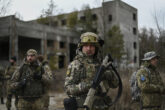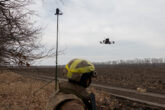January 30, 2018
Navigating Dangerous Pathways
A Pragmatic Approach to U.S.-Russian Relations and Strategic Stability
The ongoing integration of new technologies by U.S. and Russian militaries – particularly cyber, space, long-range strike, missile defenses, autonomous systems, and big data analytics – is creating new and growing strains on strategic stability between these two great powers. The inherent difficulty of managing these strains is exacerbated by the overall deterioration of U.S.-Russian relations.
A previous report offered a framework for understanding the strains on strategic stability in this context of rapid technological change and difficult U.S.-Russian relations. This framework described the linked and changing dynamics of three interrelated pathways to crisis or conflict: (1) the future course of U.S.-Russian relations; (2) potential slippery slopes from peacetime to crisis and conflict; and (3) the possibility that conflict could escalate to attacks against each other’s homeland and even nuclear war.1 This report builds on that framework by offering concrete recommendations for managing each of the three pathways.
A key insight that arose from earlier work is that stabilizing U.S.-Russian relations requires actions along each of the three pathways, conducted in parallel. Shaping and managing the overall relationship is fundamentally important. But whatever the course of U.S.-Russian relations in the future, there will remain a possibility (one, we argue, that is growing over time) of sliding into crisis and even armed conflict. Moreover, if a crisis or conflict does occur, there is a possibility (also growing over time) that escalation to strategic attack could occur.
Whatever the course of U.S.-Russian relations in the future, there will remain a possibility (one, we argue, that is growing over time) of sliding into crisis and even armed conflict.
The previous study examined how new technologies may create new challenges for managing one or more of the three pathways. To take but one example, offensive cyber operations are a critical tool for “gray-zone” efforts such as the Russian meddling in the 2016 U.S. presidential election, which clearly had a major impact on U.S.-Russian relations. In addition, because of their potential for creating disruptive or destructive effects without directly producing casualties and potentially with delayed attribution, cyberattacks on weapons systems and supporting infrastructure are likely to be extremely attractive early moves in any conflict. In addition, if offensive cyber capabilities are themselves somewhat vulnerable, there may be substantial incentives to “go early” and “go big” in cyberspace. To the extent that either side feared that the other could use cyber capabilities to delay or deny its non-nuclear capabilities, incentives to use nuclear weapons early would rise; fears that the other side’s cyber capabilities could degrade or deny a nuclear second strike could create “use-or-lose” incentives that would drive early use of nuclear weapons and seriously increase risks of a nuclear exchange. Indeed, even the discovery of an adversary cyber implant in one side’s nuclear strike systems – and uncertainty about its effects or worries that there may be undiscovered others – could increase use-or-lose pressures. This example is emblematic of dynamics arising from technological advancements in space, long-range strike, missile defenses, autonomous systems, and big data analytics.
This report reiterates some of the context regarding each of the three pathways but focuses primarily on concrete recommendations for managing them. The aim is to help shape the ongoing debate regarding U.S.-Russian relations and guide actions affecting U.S. nuclear posture, ballistic missile defenses, cyber deterrence, and space resilience. The recommendations also address the American role in NATO and NATO-Russian relations, both of which are of critical importance to all three pathways.
The full report is available online.
- James N. Miller Jr. and Richard Fontaine, “A New Era in U.S.-Russian Strategic Stability: How Changing Geopolitics and Emerging Technologies are Reshaping Pathways to Crisis and Conflict” (Center for a New American Security, September 2017), https://www.cnas.org/publications/reports/a-new-era-in-u-s-russian-strategic-stability. ↩
More from CNAS
-
Defense / Transatlantic Security
When Defense Becomes Destruction: Austria-Hungary’s Mistake and Ukraine’s RiskThis article was originally posted on War on the Rocks. The southeastern Polish city of Przemyśl, with its elegant 19th century Habsburg-era train station, remains one of the ...
By Franz-Stefan Gady
-
Defense / Transatlantic Security
Ukraine’s Catch-22 MomentThis article was originally published in the Financial Times. In Joseph Heller’s wartime classic, Catch-22, the protagonist Yossarian seeks out the US army surgeon Doc Daneeka...
By Franz-Stefan Gady
-
CNAS Insights | Budgetary Own Goals Undermine “Speed and Volume”
On November 7, Secretary of Defense Pete Hegseth laid out a plan to overhaul the Department of Defense’s (DOD’s) acquisition system. Placing an emphasis on delivering new capa...
By Philip Sheers, Carlton Haelig & Stacie Pettyjohn
-
Drones: Who Is Making the New Weapons of War?
From Ukraine and Russia to Gaza and Sudan, drones have become a key weapon of war. Which companies are making them, and profiting from this rapidly expanding but controversial...
By Stacie Pettyjohn






